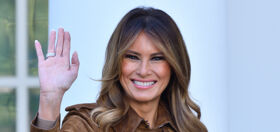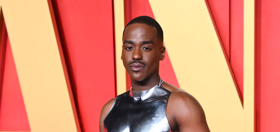View this post on Instagram
In a world where fashion is constantly changing, it can be hard to keep up with the latest trends. If you’re looking to stay ahead of the curve, one place you should keep an eye on is Japan.
The Japanese fashion scene is known for its no-holds-barred approach to fashion. Whether you look at big-name designers or fashion-forward youths roaming the streets of Tokyo, you’re always in for a pleasant surprise. As such, if you want to stand out, the best place to learn is Japan.
This post will teach you everything you need to know about Japanese fashion, from the basics to the latest trends. Keep reading to learn more!
RELATED: The Oscar nominations are in and Lady Gaga fans are having a collective meltdown
How about we take this to the next level?
Our newsletter is like a refreshing cocktail (or mocktail) of LGBTQ+ entertainment and pop culture, served up with a side of eye-candy.
A Brief Guide To Japanese Fashion Subcultures
London, Milan, New York, and Paris may be the big four fashion capitals in the world, but Tokyo has carved a name for itself for producing some of the most unique looks anywhere in the world. For Tokyo’s residents, fashion is all about play, experimentation, kitsch, camp, and individuality.
Many popular Japanese fashion trends are, in fact, inspired by concepts and trends from the West. However, the Japanese turn these ideas on their heads and throw things like traditional Japanese design, anime, and Japanese youth culture into the mix.
Before we discuss some of the Japanese fashion trends we look forward to in 2022, as well as some of today’s best Japanese fashion designers, let’s talk about some of the biggest subcultures that have or continue to influence today’s Japanese fashion scene.
Lolita
When you talk about Harajuku fashion, most people who are familiar with Japanese clothing and style will immediately think of Lolita fashion.
Inspired by Victorian and Edwardian style but with an emphasis on “cuteness”, Lolita is often characterized by bell-shaped or A-line skirts, petticoats, lace blouses, soft and flowy chiffon, bonnets, bows, and knee socks or stockings.
Lolita style became popular around the early 2000s, when Japanese girls would walk the streets of Harajuku in these dramatic silhouettes. Lolita style isn’t limited to one particular look either. There are various subcultures that fall under Lolita, including gothic, punk, country, and sailor-style Lolita.
View this post on Instagram
Visual Kei
In the 80s, Japanese fashion aficionados were enamored by the punk, heavy metal, and goth rock sensibilities that had become popular in the US. Thus, Visual Kei was born.
Characterized by heavy makeup, elaborate and asymmetrical hairstyles, metallic shoes, and kitschy accessories, Visual Kei is comparable to Western glam rock fashion styles.
Though less popular now, Visual Kei did see a resurgence in the 2000s in the Neo-Visual Kei style.
View this post on Instagram
Gyaru
This 90s Japanese fashion trend is characterized by lightly-dyed hair (usually blonde or light brown), revealing clothes, and heavy makeup. It was first popularized by girls from the upper classes who could afford to emulate the everyday personal style of girls from the West.
Unfortunately, this style was also deemed quite controversial, especially when it came to the makeup. At their most extreme, Gyaru girls would wear a dark tan with overdrawn white eyeshadow and white lipstick. This was especially popular among self-described “Ganguro girls”, who pushed the Gyaru style to cartoonish levels.
Another subculture, the Kogyaru girls, would modify their school uniforms and wear them everywhere. Typically knee-length skirts would become mini skirts, and tight-fitting socks would be traded in for “loose socks”.
View this post on Instagram
Mori Girls
Similar to the cottagecore aesthetic, Mori-kei is distinguishable by the use of muted colors and nude shades like beige, brown, off-white, light green, and earthy red, as well as natural materials like cotton, linen, wool, and leather.
Mori translates to “forest” in Japanese, and Mori girls would often don vintage clothes with a folksy aesthetic. Think prairie tunics and peasant skirts.
This style first rose to popularity in the late 2000s. And while it isn’t as big today, you can still find Mori-style outfits in the vintage stores of Shimokitazawa and Koenji.
View this post on Instagram
Kireime Kei
This style is said to be the Japanese equivalent to preppy fashion. It’s often described as “conservative”, understated, and minimalist. According to one fashion blog, the goal of Kireimi Kei fashion is not to stand out with statement pieces, but to maintain a neat and almost traditional look.
Salon Boys
Salon boy style was made popular by male hairstylists who worked in Harajuku. The stylists were known for their refined taste and would mix designer brands with vintage or second-hand clothes. They were also known to play with a lot of kitschy accessories, including porkpie hats, belts, and vintage sunglasses.
Japanese Street Fashion
The Japanese street fashion scene is known around the world for producing some of the most creative and visionary looks. Like other international fashion weeks, Tokyo Fashion Week is followed by designers, stylists, and fashion experts worldwide.
Japanese street fashion takes inspiration from various sources, including American street style, skater fashion, hip-hop culture, and hypebeast style.
View this post on Instagram
12 Japanese Fashion Trends in 2022
In 2022, Japanese fashion styles will be all about individuality and self-expression. From gender-neutral styles to innovative fabrics and colors, these 12 trends will help you express your unique personality through your wardrobe.
1. The E-girl Aesthetic
If you spend enough time on TikTok, then chances are you’ve heard the term “e-girl” before. Self-described e-girls are often gamers, streamers, and girls who enjoy spending most of their time online.
E-girl style takes cues from a bunch of different subcultures and aesthetics, from Lolita and kawaii to emo, soft grunge, and goth. Today’s e-girls also borrow from rave culture, anime, as well as K-pop and J-pop fashion.
View this post on Instagram
2. Metallics
Along with the e-girl aesthetic came the rise of the shiny metallic statement piece – whether that means donning a reflective parka, holographic platform shoes, or a glittering pair of silver shorts.
View this post on Instagram
3. Graphic Athleisure
Tokyo’s graphic athleisure trend takes the US’ Lululemon fascination to new heights, injecting big and bold prints, loose track pants, massive hoodies, and chunky sneakers into the mix.
View this post on Instagram
4. Business Attire
The classic office worker, or salaryman, typically wears a fitted gray or black suit as their standard work attire.
However, on the streets of Harajuku, where fashionistas come to play, you’ll be hard-pressed to find a well-tailored coat. Instead, Japan’s fashion-forward youth can be seen wearing big, roomy jackets and wide-legged pants.
View this post on Instagram
5. Mixing And Matching Prints
Plaid on plaid, animal prints layered on top of stripes, clashing tops and bottoms. Today, if you want to make a fashion statement on the streets of Tokyo, it seems that busier is better!
View this post on Instagram
6. Conversation Shoes
Camel-toe boots may be more commonly associated with Maison Margiela, the designer who made the look famous with his Tabi boots, but this style of shoe actually has roots in 15th century Japan.
As such, it’s no wonder that the Japanese love these boots, and you’ll see many a Tabi on the Harajuku streets. Other trendy conversation shoes include patent leather platform shoes, Yeezy-style sneakers, and the square toe boot.
View this post on Instagram
7. Wide Leg Pants
Skinny jeans have been out of vogue for some time now. Today, anyone who’s the least bit fashion-forward knows that wearing wide-legged pants is the way to go.
View this post on Instagram
8. Embracing Tradition
Japanese people love to mix the old with the new and have a deep appreciation for their traditional culture. It’s no surprise then to see Japanese style icons remixing the kimono. Considered the national Japanese dress, the kimono is traditionally worn with a broad sash, wooden or rubber sandals called zori, and tabi socks.
Today, you can find traditional kimonos layered with modern-style jackets as well as kimonos made out of or mixed with more unconventional fabrics such as denim or lace.
View this post on Instagram
9. Decora Kei
Decora kei is a Japanese aesthetic that first emerged in the mid-90s. Based on the word “decoration”, this style is all about excess. Fans of decora love wearing loud rainbow hues, adorning kitschy accessories all over their outfits, and using as many tactile materials on their clothes, shoes, and bags as possible.
Today, we’re seeing a resurgence of the Decora style, particularly on the streets of Harajuku.
View this post on Instagram
10. Camo Chameleon
Yes, that’s right, camo is in once again. This time, we’re seeing camo prints in unusual color combinations and on all sorts of clothing, from knee-high boots to sequin-laden skirts to deconstructed trench coats.
View this post on Instagram
11. Designer Face Masks
Even before the COVID-19 pandemic, Japanese people were used to wearing face masks in public.
Japanese society is known to be collectivist, meaning that they often think about themselves as members of a collective unit rather than mere individuals. As such, they’re particular about taking care of each other as much as their own selves and cautious about putting others in harm’s way. This is perhaps the main reason why Japanese people will be quick to don masks at the slightest possibility of carrying a cold or the flu.
With that being said, as masks became more of an everyday item, those who wanted to express their personal style did so by personalizing their face coverings and even donning designer masks.
View this post on Instagram
12. Gender-neutral Style
In 2021, we saw gender-neutral fashion spill over into the mainstream, with big-name celebrities like Jaden Smith and Harry Styles stepping out in skirts, dresses, and crop-tops. This democratic approach to fashion can now be seen all over the streets of Tokyo, too.
View this post on Instagram
10 Japanese Clothing Brands You Should Follow In 2022
Love what you’ve seen from the Japanese streetwear scene? If you want to add some more Japanese fashion trends to your wardrobe, make sure you know which brands are leading the charge.
1. A Bathing Ape
Also known as BAPE, this Japanese fashion brand was founded by designer and record producer Nigo in 1993. Today, it’s one of the most well-known and easily recognizable streetwear brands in the world, worn by the likes of Drake and The Weeknd.
If you want in on the camo trend, A Bathing Ape has tons of options for you. Just check out these fire parkas from the BAPE x Canada Goose x Concepts collection.
View this post on Instagram
2. andWander
If you’re a fan of utilitarian fashion and clean, stylish outerwear, look no further than andWander. Established in 2011 by haute-couture designers Mihoko Moti and Keita Ikuechi, the brand merges runway-ready looks with the kind of performance and durability that would last you a week out in the Alps.
View this post on Instagram
3. COMME des GARÇONS
Despite being initially dismissed as “ragged chic”, Rei Kawakubo’s COMME des GARÇONS has come to be known as one of the most exciting fashion brands in the world. CDG has become synonymous with the term “avant-garde”, and it’s earned it. With pieces that seem to swallow their wearers whole, CDG makes you question what you thought you knew about high fashion.
A lot of what Rei puts out there on the runway isn’t exactly wearable, so if you really want to exude the eccentricity and intensity of CDG without the hassle of managing a massive garment, you can always find something street-ready from the CDG Play line – also known as the one with the cheeky heart eye logo.
View this post on Instagram
4. Issey Miyake
Speaking of technicality, we can’t have a list of influential contemporary designers without mentioning Issey Miyake. Miyake, as the Guardian puts it, “has an obsession with making clothes that are light, practical and washable, and that don’t crease”.
Miyake’s thoughtfully engineered garments are, indeed, a masterpiece, striking the perfect balance of visual intrigue, functionality, and timelessness. His most revolutionary contribution to the fashion world was pleated garments that “remember” their pleats, thus eliminating the need for ironing or really any kind of extensive care.
View this post on Instagram
5. Junya Watanabe
You can’t talk about Japanese menswear without bringing up Junya Watanabe. Like Rei Kawakubo of CDG, whom he worked under for years before venturing on his own, Watanabe’s designs push the boundaries of fashion with experimental layers and unique cuts.
View this post on Instagram
6. NEIGHBORHOOD
Established in 1994 by Shinsuke Takizawa, NBHD is known as one of the purveyors of Harajuku streetwear and an influential force in the rise of Tokyo streetwear as a whole. NEIGHBORHOOD takes cues from classic Americana, including motorcycle culture, military and camo style, and workwear.
View this post on Instagram
7. Sacai
The word “sacai” means to “combine two or more different garments into one by hybridizing”. And that’s exactly what designer Chitose Abe does with Sacai. As Vogue puts it so succinctly, “Abe’s work has been essential to breaking down the [distinctions between casual and formal].”
View this post on Instagram
8. UNDERCOVER
HighSnobiety magazine calls UNDERCOVER “the epitome of Japanese streetwear”. Spearheaded by designer Jun Takahashi, UNDERCOVER is influenced by a lot of different styles and aesthetics, including streetwear, couture, and even punk. Like many brands on this list, it’s one that doesn’t take itself too seriously, constantly playing and evolving into the next best thing.
View this post on Instagram
9. visvim
Founded in 2001 by Hiroki Nakamura in Ura-Harajuku, this Japanese menswear brand is on a “continuous search for a universal sense of beauty and making products with a true and lasting value”. Nakamura himself has described his style as “future vintage”.
The result? Timeless pieces that, while referencing the past, have a distinctly modern touch to them. Rugged but at the same time polished, understated but also eye-catching.
View this post on Instagram
10. Uniqlo
Most of the brands mentioned here are high fashion brands that, let’s face it, the ordinary person might not be able to afford. Uniqlo, on the other hand, is a brand that deftly balances craftsmanship with affordability. Uniqlo’s offerings are minimalistic, so you probably won’t find them photographed on Harajuku, but they’re classy, sharp, and easy to mix and match.
View this post on Instagram
The Bottom Line
The Japanese fashion industry is one of the most influential in the world and it’s only getting more popular. With so many different subcultures, clothing trends, and brands to follow, it can be very overwhelming for those who are new to this niche.
We hope you enjoyed our brief guide and learned a thing or two about how you can incorporate Japanese fashion into your own personal style this 2022!
RELATED: Non-binary haircuts: The best androgynous hairstyle ideas


















HankHarris
of course the article is going to post the most outlandish looks first, and the more fashion -forward at the end. Even more conservative Japanese style (like their take on American workwear) is fantastic.
BarryM
Most of the clothes featured in the pics above are UGLY. Hubert de Givenchy must be turning over in his grave.